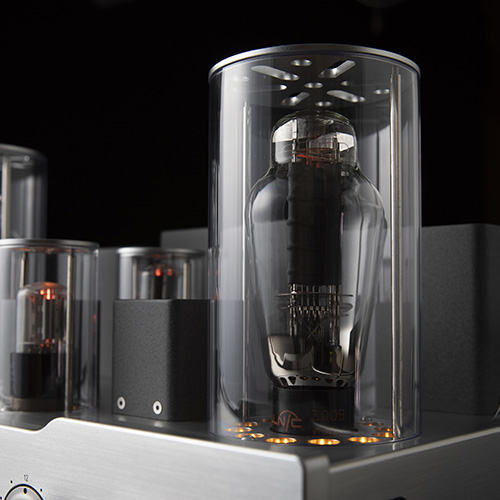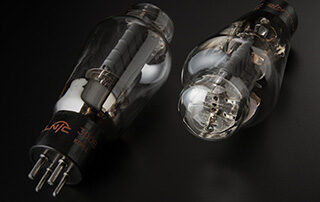설명

| Technical Specification | |
|---|---|
| Maximum Rating | |
| Plate Dissipation | 40Watt |
| Plate Supply Voltage | 450V |
| Plate Current | Fixed Bias 70mA , Self Bias 100mA |
| Filament Rating | |
| Voltage | 5 V (AC or DC) |
| Current | 1.2 Ampere |
| Transconductance | 5000 umhos |
| Internal Resistance | 770 ohm |
| Amplification factor | 3.8 |
ALLNIC’s In-House Made Audio Tubes
High-Fidelity Audio Tubes By ALLNIC
1. Frame Grid Structure
The Endless Pursuit of Sound FREE of Microphonically Induced Noise
Tube lovers have been haunted by the mixture of music with noise produced by the microphonic characteristics of the vacuum tube for a hundred years. In fact, and as everyone knows, with the introduction of solid-state amplification devices, music lovers who disdained this form of distortion quit tubes forever, despite the vacuum tube’s sonic beauty.
However, it is often forgotten that during the glory days of the vacuum tube, the development of the framegrid, which greatly reduced the susceptibility of vacuum tubes to microphonic vibration, proved a true blessing for industries that required tubes for use in extreme conditions.
During its planning for the in-house production of vacuum tubes for high quality audio equipment, ALLNIC did not forget the frame grid.Today, ALLNIC applies the frame grid structure to the production of its own direct-heated triode audio tubes. The result is astonishing: a radical reduction of microphonically-induced noise!
ALLNIC also decided to further improve the effectiveness of the frame grid by usingvery thick grid poles and triple-mica reinforcement. Thus, the internal structure of Allnic’s vacuum tubes is a model for maximization of resistance to microphony and reduction of its consequential distortions, crucial results for lovers of high-fidelity audio.
2. Lowest End-loss by Thermal Insulation of Filament Hangers
All direct-heated vacuum tubes need filament hanger springs for cathode and filament alignment and to prevent the almost molten-hot heater filament from touching the grid and causing the tube to short-circuit.Unfortunately, these hanger springs consume heat from the filament, creating a partial, internal low-temperature zoneand, consequentially, considerable unnecessary distortion. Since the invention of the vacuum tube, many tube manufacturers have tried to solve this problem – in vain.
However, now ALLNIC has developed proprietary thermal insulation technology for its hanger design, facilitating a remarkable reduction of heat transmission from the heater filament to the hanger spring. Combined with use of the frame grid, there is even greater improvement to performance, resulting in even more exceptionally clean and distortion-free sound.
3. Electrophoretic oxide coating.
To facilitate cost-effective mass production, tube manufacturers use a dragging or dipping through an adhesive method for oxide coating of the filament. Most, if not all, other tube manufacturers rely only on the physical strength of the adhesive to attach the oxide coating. Allnic uses a more sophisticated method, employing an adhesive in combination with electrophoresis, which distributes and attaches the oxide to the filament through the application of electrical forces. In this dual method, the filaments are cut individually, then formed and, finally, an adhesive and electrophoresis are applied. This results in a higher production cost, but it provides a more even and stronger coating, the benefits of which are more even heating, less filament vibration and lower distortion.





상품평
아직 상품평이 없습니다.